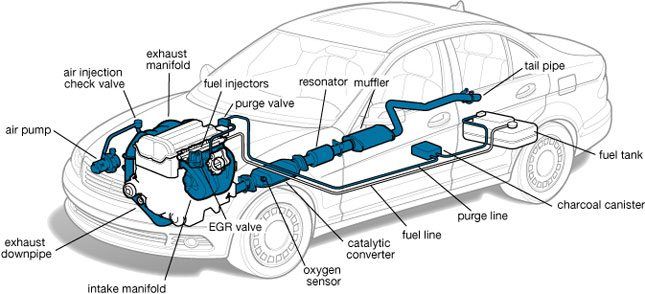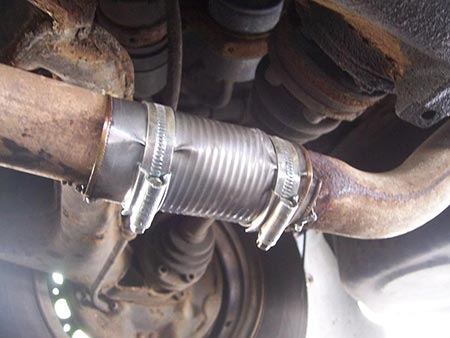
How to Fix an Exhaust Leak on Your Own
Exhaust leaks vary in extent. Some leaks may cause serious performance problems on your car while others may give your car a cool sound and make it have a slight improvement in performance.
More...
Today, I will teach you how to fix an exhaust leak at home with the most basic of tools and parts. Do you know the importance of an exhaust system?
Objectives of an Exhaust System
Your car’s exhaust system serves a basic purpose only that it happens in a complicated way. The basic exhaust system is to get rid of the gases being produced in the combustion chamber.
In order to do this effectively, the exhaust gases must be excreted far away from the cabin and in an environmental friendly manner.
The exhaust system has a secondary function of muffling the sound produced in the engine as well as the high velocity sound leaving your tail pipe. The complexity of the system comes into play when you consider the temperatures involved, the environmental standards enforced and the distance involved.
Know Your Exhaust
To achieve the basic and secondary functions your exhaust system requires several pipes, heat shields, rubber hangers, manifolds, mufflers, joints and flexible unions.
The huge temperature differences (from room temperature to over 1250 degrees) exact a lot of stress on the material and components.

A good combustion system will give water as the by-product. The water leaves your vehicle in vapour form, but during cold mornings it might condense into water increasing the risk of rust.
Since the exhaust system is typically under the vehicle (exposed to all the harshness of the road) it might get a hit or two that needs to be repaired.
Here is How to Check and Fix Exhaust Leaks
What You Will Need
- Steel toothed brush
- PPEs (gloves, eye goggles, etc.)
- Sandpaper
- An empty tin can
- Acetone
- Epoxy/ exhaust tape
- Exhaust patch
- Hose clamps
- Jack/ ramp
Checking the Exhaust System for a Leak
- STEP 1
- STEP 2
- STEP 3
- STEP 4
- STEP 5
Park your car on a flat level ground. Do not park on gravel, dirt or grass. A level concrete area is recommended.
If you have a ramp, then it is better than a jack. If you use a jack, be sure to support the vehicle with tripods or solid stone bricks.

Via Amazon.com
Fixing the Leak
Method #1
Sealing small holes – this can be done using an exhaust patch and in the case where the holes are extremely small, you can do it using epoxy or exhaust tape. Larger holes will need an aluminium patch.
- STEP 1
- STEP 2
- STEP 3
- STEP 4
- STEP 5
- STEP 6
Wear your eye goggles and gloves. Carefully scrub the region bordering the leak with your steel brush. This is to remove any mud, rust or dirt.
The repair method you will use will not hold when done over dirt and mud. Be sure to scrape all around, including the top side.
Method #2
Sealing larger holes – if the holes are smaller than three inches, but larger than pin holes, then you will need to use a patch to seal them. In case they are larger than 3 inches, then you might need to cut the entire part and replace it.
- STEP 1
- STEP 2
- STEP 3
- STEP 4
- STEP 5
- STEP 6
Establish the size of the patch that you need. You can get exhaust patches from your spare parts dealer.
Alternatively, you can make your own patch from an aluminium can. Allow half an inch or one clearance from the leak.
This means that your patch will be half an inch or one wider in diameter from the area of the patch. Make sure to read the instructions that come with the patch you bought
Summary
Exhaust leaks can have a detrimental effect on the performance of your car. Exhaust gases are not only bad for your car’s performance, but they are also very dangerous when they leak into your vehicle cabin.
They not only make you uncomfortable sitting in your cabin, but when inhaled for long, they may have fatal health consequences. If you smell any exhaust fumes in your car cabin, you should check your exhaust system immediately
There you have it. I would like to thank you for your time. I cannot say this enough number times; wear protective material. Goggles and gloves at the very least.
You will want to alert the person doing your laundry to expect a hard to remove gloop on your clothes. If you liked this post, share it with your friends





